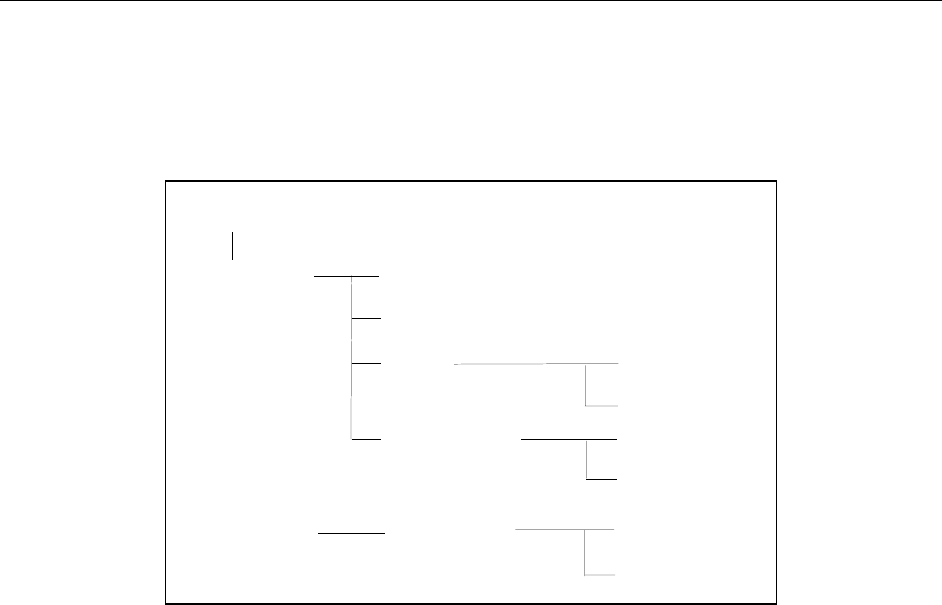
2 - Introduction to Programming
18
The SCPI Command Tree
As previously explained, the basic SCPI communication method involves sending one or more properly
formatted commands from the SCPI command tree to the instrument as program messages. The
following figure shows a portion of a subsystem command tree, from which you access the commands
located along the various paths (you can see the complete tree in appendix A).
Figure 2-1. Partial Command Tree
The Root Level
Note the location of the ROOT node at the top of the tree. Commands at the root level are at the top level
of the command tree. The SCPI interface is at this location when:
u the ac source is powered on
u a device clear (DCL) is sent to the ac source
u the SCPI interface encounters a message terminator
u the SCPI interface encounters a root specifier
Active Header Path
In order to properly traverse the command tree, you must understand the concept of the active header
path. When the ac source is turned on (or under any of the other conditions listed above), the active path
is at the root. That means the SCPI interface is ready to accept any command at the root level, such as
OUTPut or STATe.
If you enter OUTPut, the active header path moves one colon to the right . The interface is now ready to
accept :STATe, :COUPling, :DFI, or :PROTection as the next header. You must include the colon,
because it is required between headers.
If you now enter :PROTection, the active path again moves one colon to the right. The interface is now
ready to accept either :CLEar or :DELay as the next header.
:OUTPut
[:STATe]
:DFI
:PROTection
ROO
:CLEar
:DELay
:STATus
:CONDition?
:OPERation
[:EVEN]
?
[:STATe]
:SOURce
:COUPlin
